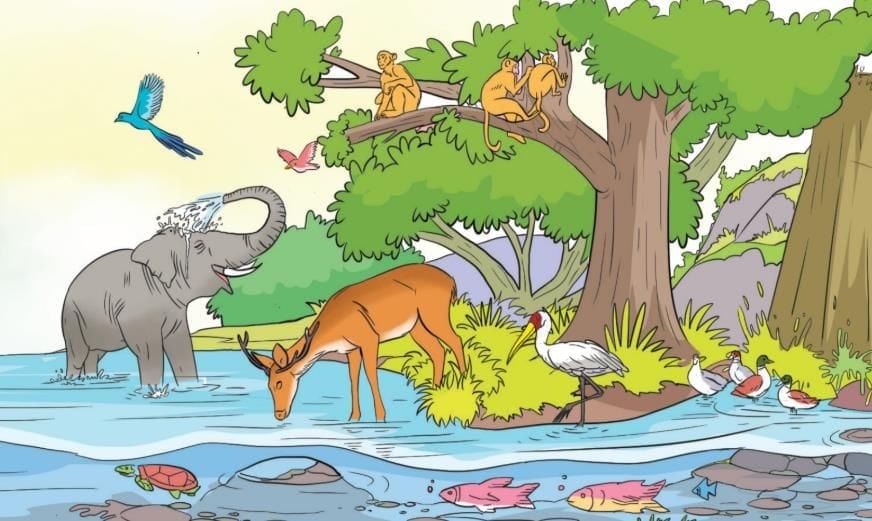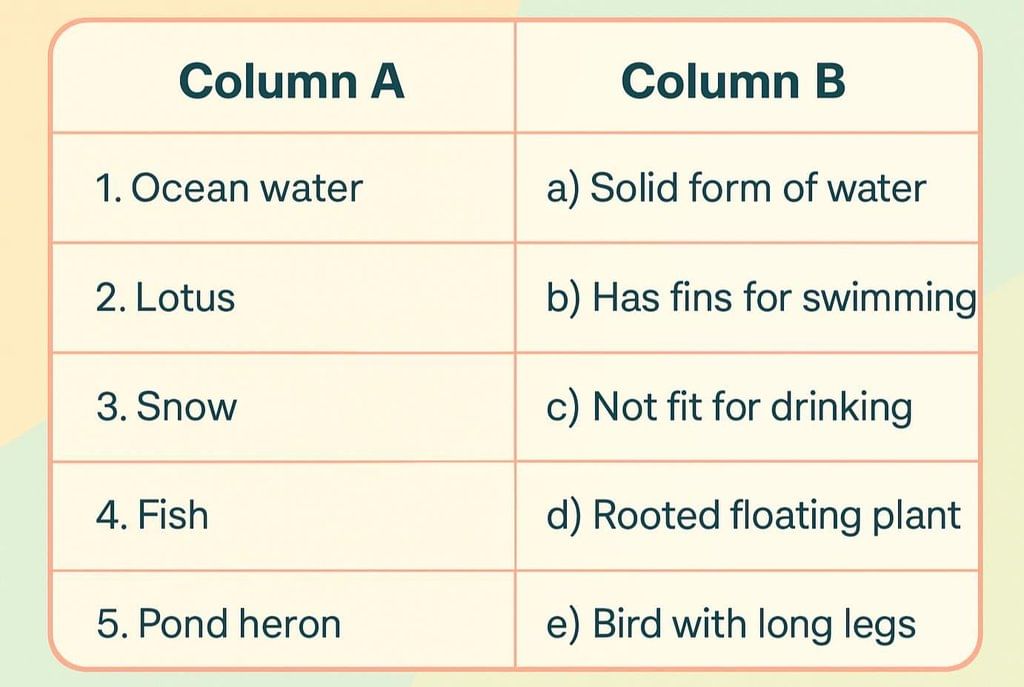Worksheet: Water - The Essence of Life | Our Wondrous World Class 5 - New NCERT PDF Download

Q1: Choose the correct option for each question.
(i) What percentage of Earth's water is freshwater?
A) 1%
B) 10%
C) 3%
D) 5%
(ii) What is the process called when water turns into vapour?
A) Precipitation
B) Evaporation
C) Condensation
D) Filtration
(iii) Which of the following is NOT a type of freshwater?
A) Pond
B) River
C) Ocean
D) Lake 
(iv) What do we call the water that soaks into the ground?
A) Surface water
B) Groundwater
C) Rainwater
D) Tap water
(v) What is primarily responsible for the water cycle?
A) Wind
B) Sun
C) Trees
D) Animals
Q2: Match the items in Column A with the correct descriptions in Column B.

Q3: Fill in the blanks with the correct words from the chapter.
(i) The process of water falling to the ground is called __________.
(ii) Water exists in three forms: liquid, solid, and __________.
(iii) Groundwater is obtained by digging __________.
(iv) The __________ River in Rajasthan ends in the Rann of Kutch.
(v) Freshwater plants that float on the surface are called __________ plants.
Q4: State whether the following statements are True or False. Correct the false statements.
(i) Most of the Earth's water is freshwater.
(ii) Rainwater is a type of surface water.
(iii) Water vapour can form clouds when it cools.
(iv) Water cannot exist in solid form.
(v) Planting trees helps in groundwater recharge.
Q5: Answer the following questions in 2-3 sentences each.
(i) Where does freshwater come from?
(ii) What are the three forms of water?
(iii) What is the water cycle?
(iv) How do we get groundwater?
(v) Why are rivers important?
Q6: Answer the following questions in 4-6 sentences each. Use examples from the chapter to support your answers.
(i) Describe the water cycle in detail, including how water changes forms and moves through nature. Explain why it is important for life on Earth.
(ii) Explain the difference between freshwater and saltwater sources. Discuss why freshwater is essential for humans, plants, and animals, and what challenges we face in accessing it.
(iii) How do rivers form and flow across the land? Use the mustard seed activity and examples from Indian rivers to describe how they shape the landscape and support ecosystems.
(iv) Why is groundwater recharge important, and what happens if it doesn't occur properly? Suggest ways to conserve water and protect groundwater in cities and villages.
You can find Worksheet Solutions here: Worksheet Solutions: Water - The Essence of Life
|
11 videos|211 docs|10 tests
|
FAQs on Worksheet: Water - The Essence of Life - Our Wondrous World Class 5 - New NCERT
| 1. Why is water often referred to as the "essence of life"? |  |
| 2. How does water support ecosystems and biodiversity? |  |
| 3. What are the main sources of freshwater on Earth? |  |
| 4. How does water cycle through the environment? |  |
| 5. What are the consequences of water pollution? |  |






















